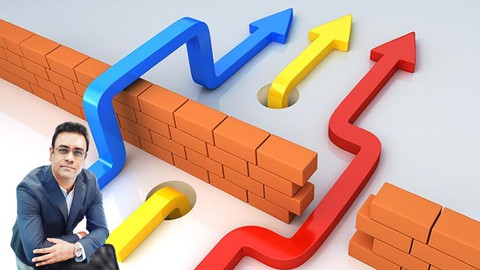Practical Basic Sales Skills, Sales Strategies and Sales Techniques for Beginners, Entrepreneurs, Startup & B2B Sales.
- Sales is a learnable thing” and once you are AWARE of the rules of the game, you will stop committing silly mistakes.
- There is a big difference between fundamentals of traditional sales methods as well as the online sales funnel strategy for every entrepreneurs.
- There is basic difference between Traditional sales and Online Sales. You can get to know details about topic in an online course by Manas Roul at Udemy –
Sales Made Easy For Everyone – Sell Just Anything To Anyone!
This course will cover both traditional sales systems and the prevailing online sales methods - Create optimal mindset for sales success so that you stop making unconscious mistakes and more naturally do things that lead to more sales
- Uncover what your prospects actually WANT to Buy so that selling becomes easier and more enjoyable
- Discover your ideal and most profitable next clients so that you waste less time pitching the wrong people
- Sell the way your prospects naturally buy so that you encounter less resistance and close more sales
- Establish a solid sales process so you can consistently make sales and always know what to do next
- Determine which metrics to pay attention to so you know how to create maximum improvement with the least amount of effort
- Use peak performance secrets so that you can exponentially grow your sales skills and income
- Understand your prospect’s true mind so that you can deliver a razor sharp sales message and avoid turning your prospect off
- In short in this online course at UDEMY, you will learn specifically why, what, when, where and exactly how to sell more, sell faster, avoid unnecessary stress and learn to love what you do.

Sales Process
Sales process is a set of repeatable steps that a sales person takes to take a prospective buyer from the early stage of awareness to a closed sale. Typically, a sales process consists of 5-7 steps: Prospecting, Preparation, Approach, Presentation, Handling objections, Closing, and Follow-up.
What Will You Learn
Professional selling involves a series of seven distinct steps.
- Prospecting is finding and qualifying potential customers. Qualifying is the process of determining whether a potential customer has a need or want that the company can fulfill, and whether the potential client can afford the product.
- Preparation involves preparing for the initial contact with a potential customer. You will need to collect and study relevant information, such as product descriptions, prices, and competitor information. You will also need to develop your initial sales presentation.
- Approach is the first face-to-face interaction you will have with the potential customer. In the premium approach, you give your prospect a gift at the beginning of the interaction. It may be a pen, a novelty item or company calendar, for example. Another method is the question approach, in which you ask a question to get the prospect interested. For example, ‘Would you have a problem making a 15% annual return on an investment?’ You may also use the product approach, in which you give the prospect a sample to review. The idea behind all of these approaches is to get the prospect involved in the interaction quickly.
- Presentation is actively listening to the needs and wants of the potential customer and demonstrating how your product can meet those needs and wants.
- Handling objections is an important part of the process. Objections can be useful because they tell the salesperson what to focus upon in addressing a prospect’s concerns. Successful salespeople learn how to overcome objections through preparation and having the right information at hand to address them.
- Closing involves identifying closing signals from the prospect that indicate it’s decision time. There are different approaches to closing. In the alternative choice close, you assume the sale and offer the prospect a choice such as, ‘Will this be a cash or credit transaction?’ An extra inducement close involves you offering something extra to get the buyer to agree, such as a discount or a free product. In the standing room only close, you inform the prospect that time is of the essence because some impending event, such as a price increase, will change the terms of the offer.
- Follow-up is building a long-term relationship with your customer for purposes of repeat sales. For example, you make contact with the customer sometime after the sale and make sure the product was received and is in good condition. Again, the idea is not to sell at this stage, but to create a solid relationship for future sales.

Highest Rated Sales Course on Udemy
5/5
Highly Rated & Recommended, Tons of Value, Best for Start-Ups, Entrepreneurs, Sales Man, and for who want to make a career in Sales and Marketing.
Pawan K.
Student



